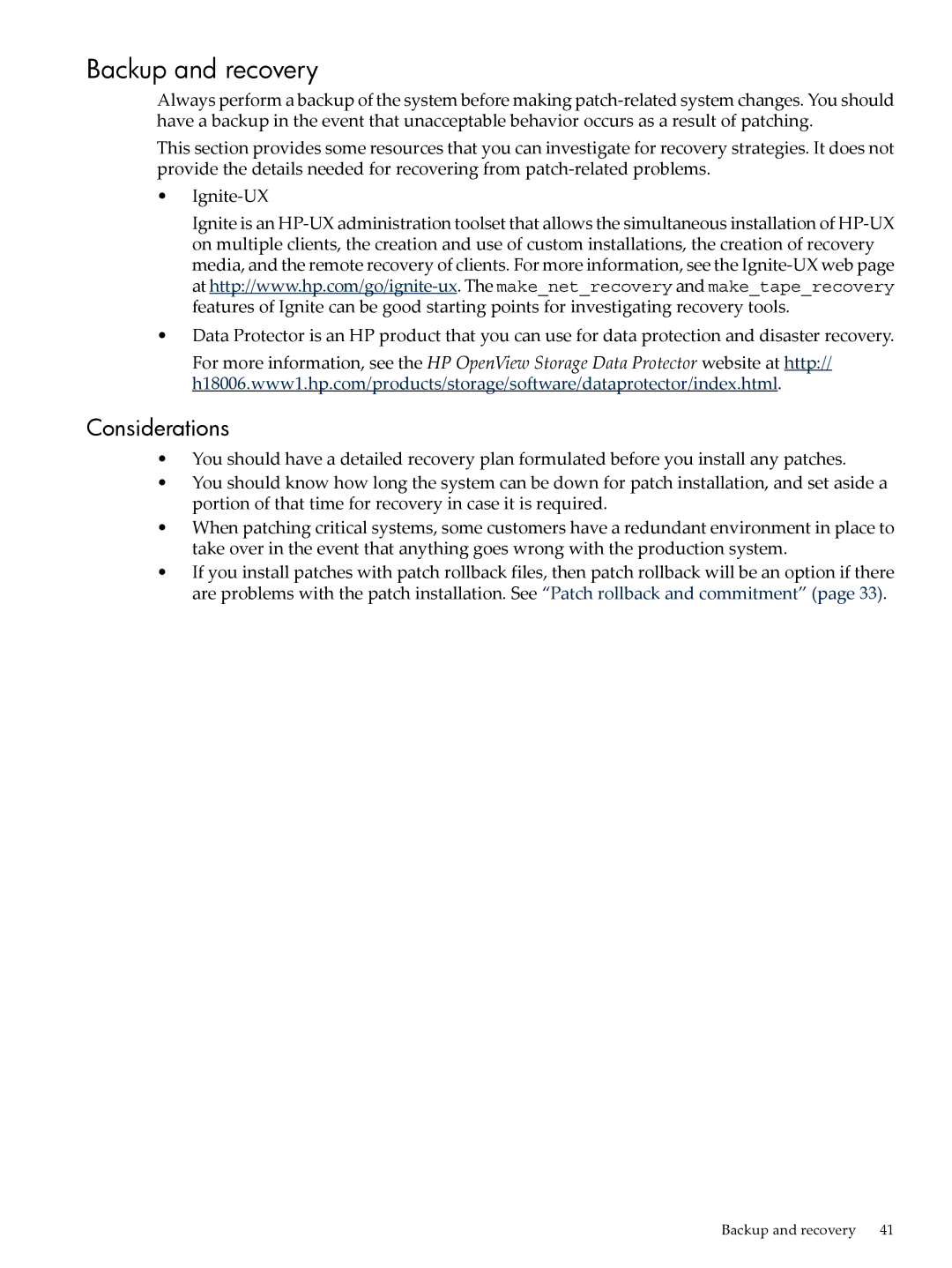Backup and recovery
Always perform a backup of the system before making
This section provides some resources that you can investigate for recovery strategies. It does not provide the details needed for recovering from
•
Ignite is an
•Data Protector is an HP product that you can use for data protection and disaster recovery.
For more information, see the HP OpenView Storage Data Protector website at http:// h18006.www1.hp.com/products/storage/software/dataprotector/index.html.
Considerations
•You should have a detailed recovery plan formulated before you install any patches.
•You should know how long the system can be down for patch installation, and set aside a portion of that time for recovery in case it is required.
•When patching critical systems, some customers have a redundant environment in place to take over in the event that anything goes wrong with the production system.
•If you install patches with patch rollback files, then patch rollback will be an option if there are problems with the patch installation. See “Patch rollback and commitment” (page 33).
Backup and recovery 41
